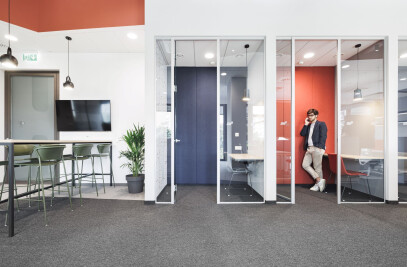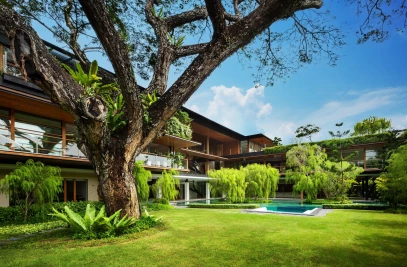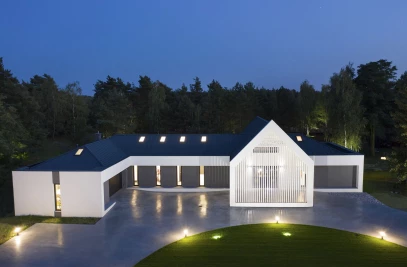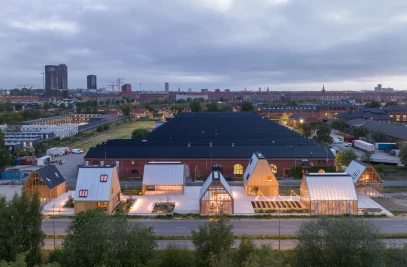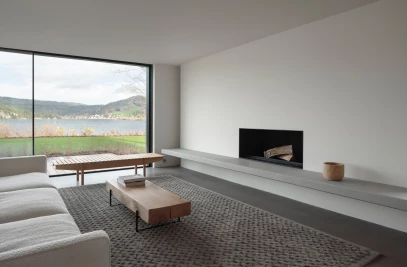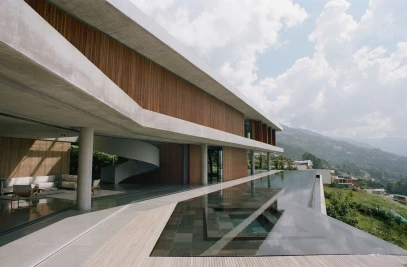In Bressanone (South Tyrol, Italy), MoDus Architects have taken a subtle approach to the renovation of and addition to the Cusanus Academy, which is considered to be a modernist masterpiece.

The Cusanus Academy is a centre of learning dedicated to the exchange of ideas at the intersection of the religious and secular worlds. The scope of the renovation includes an ensemble of seminar venues and guest accommodations, along with several architectural interventions to more organically connect the complex to its surrounding community.
In the eastern part of the city, along with Isarco River, the Academy comprises three main building components. These are Paul Norz Haus, Mühlhaus, and the Main Building - or Haupthaus. The Academy was originally designed by architect Othmar Barth and completed in 1962. It is the first modern building listed under the historic preservation commission of the Province of Bolzano.

With a modern façade of exposed brick and concrete, the building at the time of its unveiling was considered by some to be out of place with the medieval city fabric that surrounds it. Others welcomed a contemporary expression. Over time, the latter opinion has prevailed with the building today considered to be a masterpiece work and a landmark building in Bressanone.

The Academy is named after Nikolaus Cusanus, a 15th century, influential cardinal and philosopher who was heavily influenced by the works Leon Battista Alberti. The affinity between Cusanus’ and Alberti’s ideas of concinnitas, being congruity between various parts of a building, provide the subtext for Barth’s architectural concept of part to whole relationships in the name of unity and harmony.

For MoDus Architects, the challenge was to address needed technical and code-related requirements without comprising the design integrity of the Academy. In particular, the architects were asked to provide greater universal accessibility to the building, leading to a rethink of the building’s vertical and horizontal circulation as a network of social, more public spaces.
The line between original budling and new is subtle, with two key interventions. The first intervention is a newly formed axis at the ground level of the Haupthaus which visually and spatially opens the building up. The second intervention is a large new conference hall at the lower level.
On the ground floor, the new North-South axis eliminates the dead-end corridor and connects the main entryway through to the dining room. This results in an articulate throughway punctuated by a newly introduced coffeeshop and entry area, pockets of informal seating, and views into the seminar room that is located at this level. The generous nature of the hallway fosters a welcoming environment, without departing from the constructive logic of the building.

Below ground, at a semi-basement level, the former clubhouse is recast as a series of seminar rooms that become contiguous with the (excavated) addition of the large conference hall. Top lit by a U-shaped skylight, this new conference room circumscribes the footprint of the courtyard above ground and transforms a once poorly defined residual space into a place for social exchange.
Within the logic of the Haupthaus, a new vertical circulation core makes a functional link between Barth’s project and the buried, lower level introduced by MoDus Architects.

Sleeping rooms accommodating up to 96 guests are located on the upper floors of the Paul Norz Haus, the Mühlhaus and the Haupthaus’ flanking sides. Comprising a range of different sizes and capacities, the 55 rooms are finished with blue hues in the Paul Norz Haus, pistachio green in the Mühlhaus, and left with their original furnishings - or variations of - in the Haupthaus.
Original Finn Juhl armchairs that Barth had chosen for the various common spaces throughout the building have been refurbished and re-introduced in the nooks and crannies of the building. The spiritual quality of light given by the vaulted skylights can also be found in the chapel, a solemn space modified only by the artist Lois Anvidalferei’s solid stone Ambon positioned in front of the existing altar.

With a careful and tempered orchestration of a material, tectonic and technical palette of solutions, MoDus Architects’ sensitive renovation and interventions continue the contemporary and timeless built tradition of the Cusanus Academy.





























